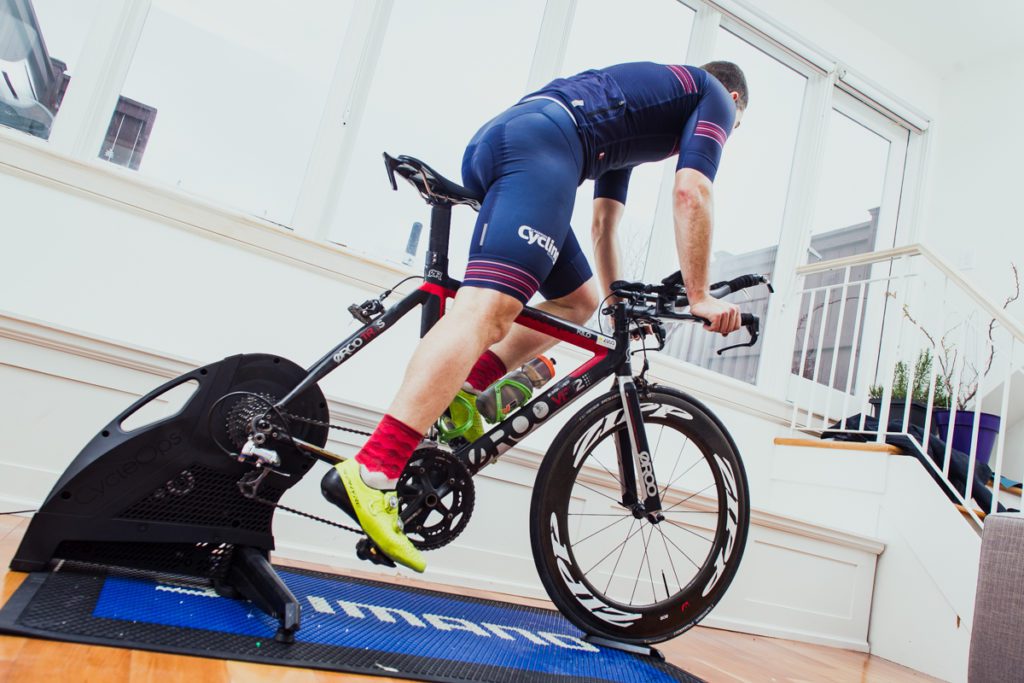The truth about the Tabata workout
The Tabata training principle is not a new phenomenon, but it remains a very simple and highly effective one.

— by Kerry Hale
Not enough hours in the day and craving a time-efficient workout? Need some variety in your existing training routine? Looking for a short blast of high-octane focus to stimulate cardio rewards and fat burn? Training that can be done anytime, anywhere, without the need for equipment? Tabata might be for you.

The Tabata training principle is not a new phenomenon, but it remains a very simple and highly effective one. Timed intervals of 20-second movements performed at maximum effort followed by 10-seconds of rest and recovery. In a complete Tabata workout, eight sets of four distinct exercises – chosen according to individual fitness goals and abilities – are performed with a short rest after eight sets are completed.
Related: The strength training you should be doing
Athletes have the option of either completing all eight sets of the same exercise before moving on to the second exercise, then the third etc., or alternatively doing one set of each of the four exercises, then repeating this process eight times. The pivotal element of Tabata training is the 20:10 principle.

Despite the simplicity, Tabata is a seriously intense and exhausting burst of physical activity. Nowadays, Tabata training is one of the most widely used forms of high-intensity interval training (HIIT) that potentially uses a greater range of muscle groups than a traditional cardio workout in a shorter amount of time. It forces athletes to work above lactate threshold to build strength, flexibility and improve cardio conditioning.
Related: Adopting a long-term approach to triathlon training
The namesake of Tabata is Japanese scientist Dr. Izumi Tabata, who performed research at the National Institute of Fitness and Sports in Tokyo in the mid-1990s. Dr. Tabata was hired by the head coach of the Japanese speed skating team to analyze the efficacy of the team’s training program, which was characterized by rotations of short bursts of high activity and short rest periods. Dr. Tabata and his colleagues compared anaerobic and aerobic benefits between people who exercised at a moderate level for a continuous period of time and those who performed these intermittent high-intensity bursts. Amazingly, the study found that intermittent exercise maximally works both aerobic and anaerobic systems, including VO2 Max and anaerobic capacity, compared to those who worked out at moderate intensity.

The Tabata style of training can be used as a stand-alone training program, but easily allows for integration within a wide variety of fitness programs, including triathlon. There is an infinite number of possible Tabata movements, including body weight exercises, free weight movements, kettlebell exercises, stationary bike spinning, sprinting, short hill repeats on foot and even single lap repeats at the local pool. Individual creativity is encouraged in order to construct one’s own Tabata workout using personalized exercises. The primary focus must always be on maintaining a top-level effort throughout the interval while completing all intervals (eight, or fewer for beginners) before allowing the body to fully relax.
Related: Smarter Trainer workouts: Raise your power with a Tabata workout
This type of training does come with a warning attached: Tabata training is better suited for intermediate to advanced athletes who are comfortable with high-intensity exercise. Additionally, there is always a greater risk of injury when performing high-impact, high-intensity exercise. For this reason, athletes should ensure they warm up adequately, start with fewer sets and take several weeks to build up to a complete Tabata workout. You shouldn’t do these workouts more than three or four times a week. Correct form is vital, so athletes need to stay on top of their technique.
Tabata, in essence, is a short, build-your-own-adventure fitness regimen that will produce a heady burn and afterglow in a time period that almost anyone can afford. It’s cost-effective, fun, super challenging and, by adhering to the 20:10 principle, produces remarkable results.

